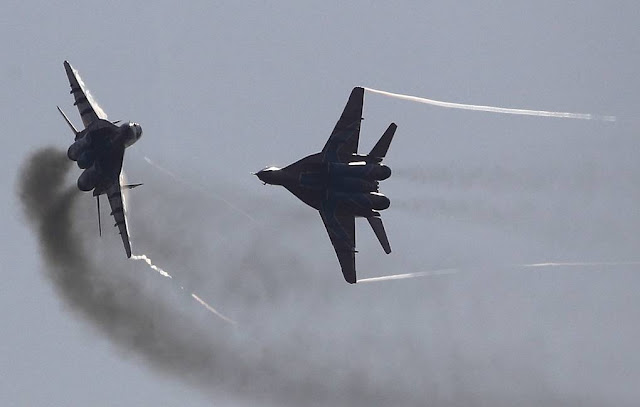Bernie C
Reuters
FILE PHOTO: Airshow in Singapore February 9, 2020. REUTERS/Edgar Su REUTERS
BY MIKE STONE AND Patricia Zengerle
WASHINGTON (Reuters) - The U.S. State Department notified Congress it approved the sale of 50 Lockheed Martin Co F-35 jets to the United Arab Emirates in a deal that could be worth $10 billion, sources said on Thursday, potentially setting up a showdown with lawmakers over the deal.
The United States and the UAE aim to have a letter of agreement for the F-35 jets in time for UAE National Day celebrated on Dec. 2, Reuters reported in September.
The U.S. Senate Foreign Relations and House of Representatives Foreign Affairs committees, whose members have criticized the UAE's role in civilian deaths in Yemen, have the right to review, and block, weapons sales under an informal review process.
Israel initially balked at the prospective sale but last week dropped its opposition after what it described as U.S. guarantees that Israeli military superiority would be preserved.
Any deal must satisfy a longstanding agreement with Israel that any U.S. weapons sold in the region must not impair Israel's "qualitative military edge," guaranteeing U.S. weapons furnished to Israel are "superior in capability" to those sold to its neighbors.
"We all face a common threat," Israeli Prime Minister Benjamin Netanyahu, in an apparent allusion to Iran, told reporters on Thursday when asked about reports of the impending UAE jet sale.
"But with that said, it was important that the (Israeli) defense establishment received this clear American undertaking to preserve our qualitative military edge," added Netanyahu, who earlier on Thursday hosted visiting Pentagon chief Mark Esper.
Representative Eliot Engel, chairman of the House Committee on Foreign Affairs, confirmed that an informal notification was sent to Congress on Thursday. "As Congress reviews this sale, it must be clear that changes to the status quo will not put Israel's military advantage at risk," he said.
The sources said the Trump administration aims to send formal notifications for the deal in the coming days. Once formally notified, Congress can choose to pass legislation to block the sale.
Typically the informal notification process for complex deals like the F-35 sale is 40 days, but the Trump administration is cutting it to just a few days to meet the goal of a UAE National Day signing ceremony, the sources said.
"Rushing these sales is not in anyone's interest," Engel warned in his statement.
Senator Bob Menendez, the top Democrat on the Senate Foreign Relations Committee, made clear he would not automatically support the deal in a statement adding that "recklessly accelerating the timeline around a reportedly artificial deadline precludes sufficient consideration."
The UAE, one of Washington's closest Middle East allies, has long expressed interest in acquiring the stealthy F-35 jets and was promised a chance to buy them in a side deal when it agreed to normalize relations with Israel.
Because of the qualitative military edge restriction, in the past the F-35 has been denied to Arab states, while Israel has about 24 of the jets. Israel is currently slated to purchase 50 of the fighters.
(Reporting by Mike Stone and Patricia Zengerle in Washington and Dan Williams in Jerusalem; Editing by David Gregorio, Tom Brown and Toby Chopra)
Copyright 2020 Thomson Reuters.
























